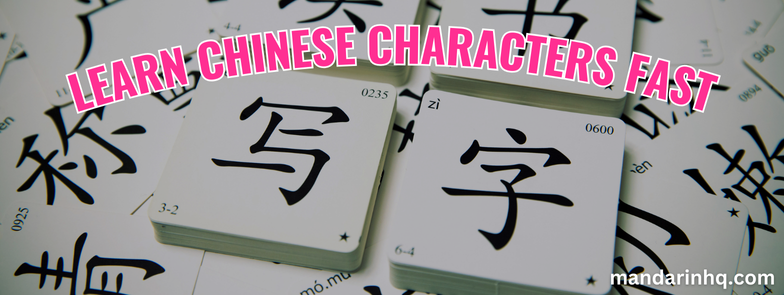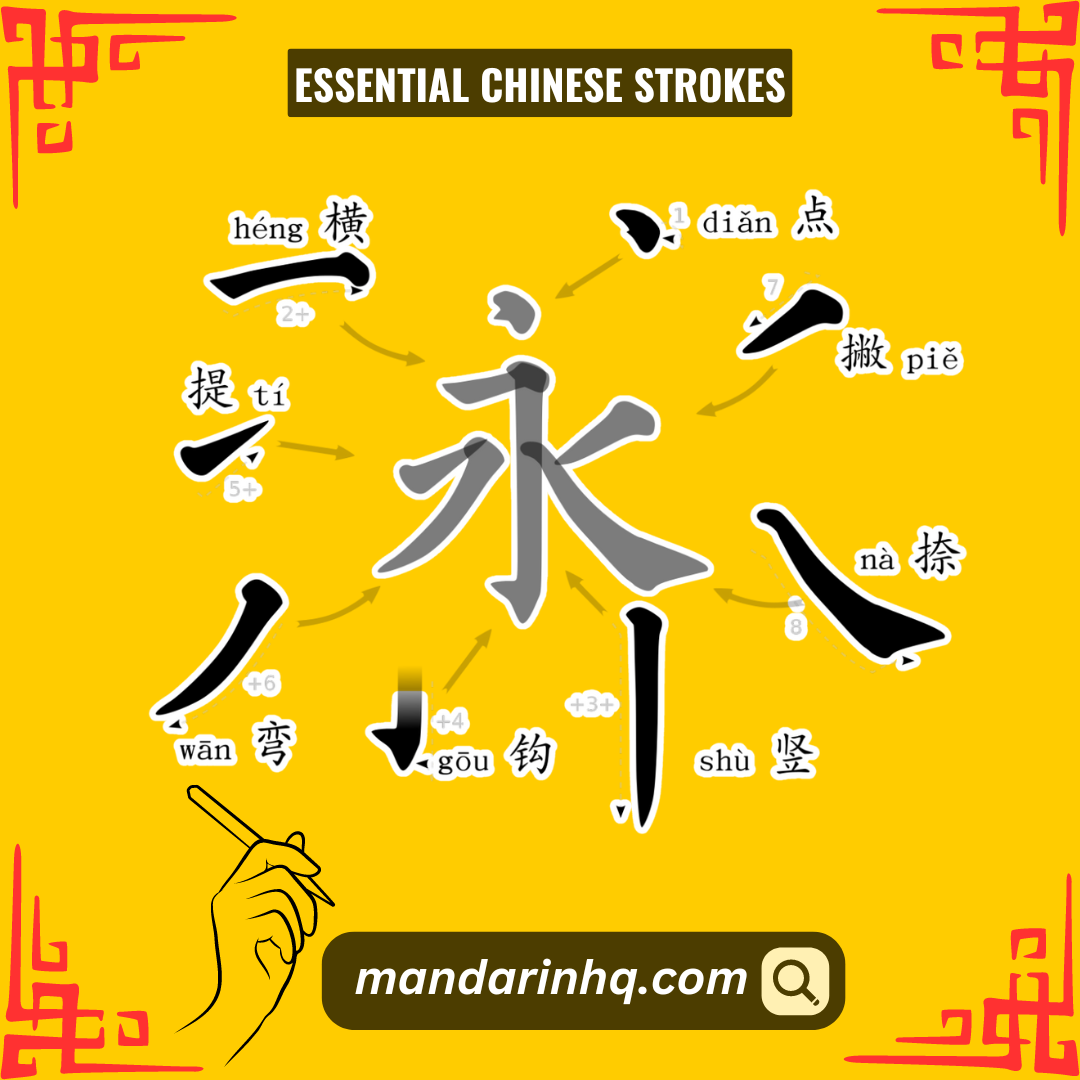Learning Chinese characters can feel like trying to decipher a code from a faraway galaxy. But here's the truth: with the right approach, mastering Chinese characters can be simpler than you think.
In this blog post, we’ll break down and practice the key elements that make up Chinese characters: strokes, radicals, and stroke order. These are the building blocks that will help you learn characters quickly and efficiently, giving you the foundation to build your vocabulary. Let's dive in!
The Basics: What Are Chinese Characters?
Chinese characters, also known as 汉字 (hànzì), are the symbols used to write the Chinese language. Unlike alphabetic writing systems (like English), Chinese characters are logograms, meaning each character represents a word or a meaningful part of a word.
Each character is composed of a set of strokes, and these strokes are arranged in specific ways to form radicals and full characters. Understanding these components is key to fast learning.
Step 1: Learn the Essential Strokes
Think of strokes as the basic building blocks of all Chinese characters. There are about 8 basic strokes, and every character is made up of these core strokes. By familiarizing yourself with these, you’ll be able to recognize and write any character more easily.
Here are the most essential strokes:
- 横 (héng) – Horizontal stroke
- 竖 (shù) – Vertical stroke
- 撇 (piě) – Downward left stroke
- 捺 (nà) – Downward right stroke
- 点 (diǎn) – Dot
- 提 (tí) – Upward stroke
- 折 (zhé) – Turning stroke
- 钩 (gōu) – Hook stroke
Characters can range from simple, single-stroke forms to more complex ones with 20 or more strokes, but the magic is that they all combine these fundamental strokes.
Pro Tip: Start by practicing these strokes individually. Pay attention to their shape and the flow of your hand. Mastering these first will make learning new characters feel like a breeze!
Step 2: Radicals - The Key to Character Recognition
Radicals are components or building blocks of characters, typically used to provide clues about meaning and pronunciation. There are over 200 radicals, but around 40 of them are frequently used and can help unlock the meaning of thousands of characters.
For example:
- 口 (kǒu) means "mouth" and is often found in characters related to speech or sounds, like 说 (shuō) (to speak) or 吃 (chī) (to eat).
- 木 (mù) means "tree" or "wood" and appears in characters like 林 (lín) (forest) and 果 (guǒ) (fruit).
Radicals give hints about a character's meaning or category. Learning the most common radicals is an essential shortcut to recognizing and remembering characters.
Pro Tip: Focus on learning the top 50 radicals, as they cover the majority of everyday characters. This will give you a mental framework for breaking down new characters into familiar parts.
Step 3: Master Stroke Order
Stroke order refers to the sequence in which you write the strokes of a character. While it might seem like a small detail, correct stroke order is important for:
- Legibility: Characters written with the wrong stroke order often look messy and are harder to read.
- Efficiency: Following the correct stroke order speeds up your writing.
- Memory: Stroke order helps you internalize the structure of a character, making it easier to recall.
Basic Stroke Order Rules:
- Top to bottom: Write from the top to the bottom. For example, in the character 三 (sān) (three), the strokes are written from the top line down.
- Left to right: Start on the left and move to the right. In the character 人 (rén) (person), the left stroke is written before the right.
- Horizontal before vertical: Write horizontal strokes first, then vertical ones, as in the character 十 (shí) (ten).
- Outside before inside: In characters like 月 (yuè) (moon), you write the outer box before the inner strokes.
- Finish the frame last: If a character has an enclosing frame (like 回 (huí) meaning to return), write the frame's closing stroke last.
Following these rules will ensure that your characters look correct and well-formed.
Step 4: Practice with Simple Characters
Once you have a solid understanding of strokes, radicals, and stroke order, it’s time to put them into practice! Start by learning simple, commonly used characters. These often have fewer strokes and help build your confidence as you learn.
Here are a few to start with:
- 一 (yī) – One
- 大 (dà) – Big
- 小 (xiǎo) – Small
- 人 (rén) – Person
- 中 (zhōng) – Middle
As you become more comfortable, gradually increase the complexity of the characters you study. Remember, even complex characters are built using the same foundational strokes and radicals.
Step 5: Reinforce with Spaced Repetition
To truly memorize Chinese characters quickly, using spaced repetition is key. Apps like Anki or Skritter allow you to review characters at optimized intervals, ensuring they stay fresh in your memory. By reviewing characters in short, spaced-out sessions, you will retain them more effectively.
Pro Tip: Write the characters by hand in addition to using digital tools. Handwriting helps solidify your memory and makes you more comfortable with stroke order and character structure.
Bonus Tips for Fast Learning:
- Focus on high-frequency characters: Some characters are used much more often than others. Focus on learning the most common 500 characters, which account for around 75% of daily Chinese usage.
- Use mnemonics: Create visual or story-based mnemonics to remember the shape and meaning of characters. For example, 木 (mù) looks like a tree, which helps you associate it with "wood."
- Immerse yourself: Surround yourself with Chinese, whether by labeling objects in your home with their Chinese names, reading simple Chinese texts, or listening to Chinese audio.
Final Thoughts
Learning Chinese characters doesn’t have to be intimidating. By breaking it down into manageable parts—understanding strokes, mastering radicals, following stroke order, and practicing regularly—you can learn characters faster and more effectively.
As a beginner, focus on learning the basics well, and soon, you’ll find yourself recognizing characters in everyday life, unlocking a whole new world of Chinese language and culture. Happy learning, and 加油 (jiāyóu)—you’ve got this!
You might also find these posts interesting:


